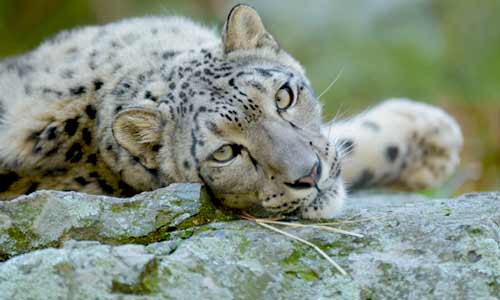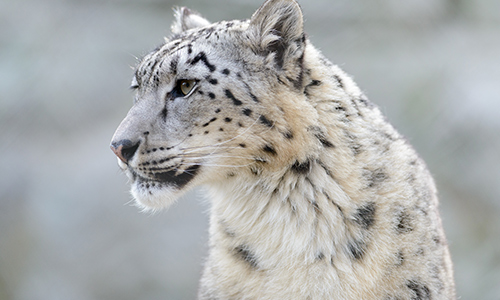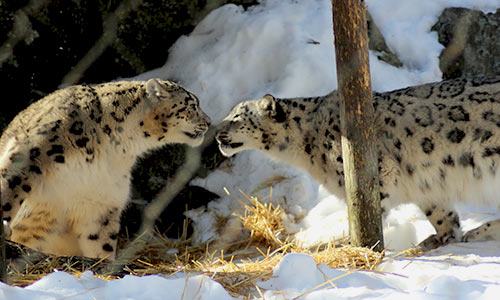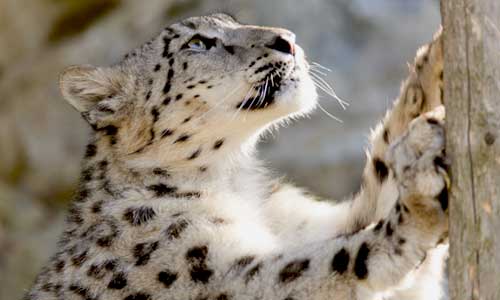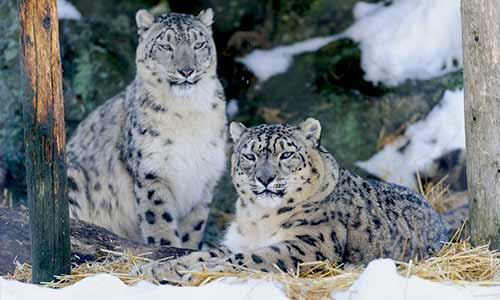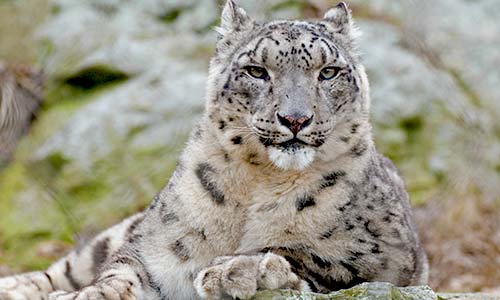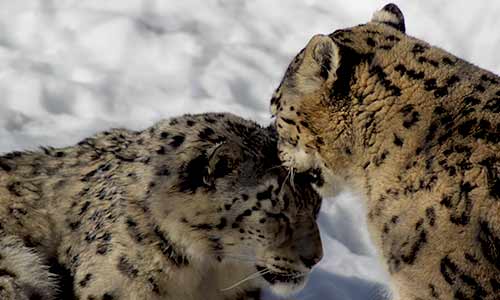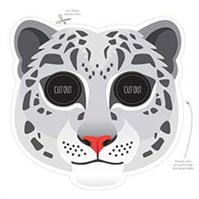Snow Leopard
Panthera uncia
About the Snow Leopard
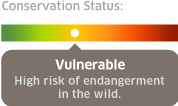
Geographic Range:
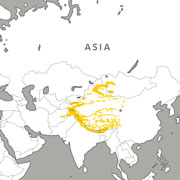
Class: Mammalia
Order: Carnivora
Family: Felidae
Genus: Panthera
Species: uncia
Snow leopards live a solitary existence in rugged mountain habitats. They have powerful legs to navigate and leap from rocky outcrops, large furry paws to move easily and quietly in deep snow, and a long, heavily-furred tail they wrap around their faces for added warmth. Powerful predators, snow leopards can kill prey up to three times their size.
Committed to Conservation
Researchers estimate that there are only between 4,000 and 8,000 snow leopards left in the wild. These solitary cats face a multitude of threats to their existence: illegal hunting, loss of prey, loss of habitat, lack of effective conservation protection, and conflict with local communities and herders needing to protect their livestock.
Species Survival Plan (SSP)
Zoo New England is a longtime participant in the Snow Leopard Species Survival Plan, which is a cooperative, inter-zoo program coordinated nationally through the Association of Zoos and Aquariums (AZA). SSPs help to ensure the survival of selected species in zoos and aquariums, most of which are threatened or endangered, and enhance conservation of these species in the wild.
Snow Leopard Trust
As a participant in the Snow Leopard SSP, Zoo New England is a member of the Snow Leopard Trust’s Natural Partnership Program (NPP), contributing funds to support research and programs aimed at protecting snow leopards and their natural habitat.
Sabin Snow Leopard Grants Program
The Sabin Snow Leopard Grants Program provides strategic funding to worthy recipients from around the world, especially in the 11 snow leopard range states. The program supports research and conservation capacity within the snow leopard conservation community and helps to identify gaps in knowledge or needed conservation actions, as well as funding new projects that fill these knowledge gaps or provide missing conservation interventions.
Snow Leopard Facts
Appearance:
Snow leopards have powerful legs and large, furry paws that act like snowshoes, allowing leopards to move easily and quietly along rocky cliffs and in deep snow. To live in such an elevated and harsh climate, snow leopards have a well-developed chest and enlarged nasal cavity to warm the cold air as it's breathed in.
With their thick, cream-colored coats and gray-black spots, snow leopards camouflage within their rocky habitat. Their tails are long (between 30-39 inches) and heavily furred, which helps them maintain balance. They’ll also wrap their tails around their faces to protect their nose and lungs. With the ability to leap down heights of 60 feet, snow leopards are said to be the most agile of the “big cats.”
Size:
Length: 3 to 4.5 feet
Weight: 60 to 120 pounds
Diet:
Snow leopards hunt marmots, pikas, hares, game birds, wild sheep, goats, deer and domestic livestock. They can kill prey up to three times their size.
Reproduction:
Snow leopards’ gestation lasts between 90 and 103 days, from April through June. The average litter size is three cubs, which weigh about 450 grams (1 pound) at birth. Cubs stay with their mother for over a year and are sexually mature by 2-3 years of age.
Behavior:
Snow leopards are diurnal (active during the day) solitary creatures except during mating season and the rearing of young. They den in rocky crevices or caverns and communicate with scent-markings and vocalizations like growls and yowls.
Habitat/Range:
Snow leopards inhabit the remote mountainous areas of Central Asia above 8,000 feet. They can be found in Afghanistan, Bhutan, China, India, Mongolia, Nepal, Pakistan, Tibet and five former republics of the Soviet Union.
Role in their habitat:
Besides humans, snow leopards are the top predators in their range. They're vulnerable due to the fur trade and loss of prey.
Median life expectancy:
In the Wild: Unknown.
In Captivity: 17 – 19 years
Conservation:
Due to harsh conditions and their remote habitats, snow leopard populations in the wild are difficult to assess. According to the International Union for Conservation of Nature (IUCN), the estimated population of snow leopards in the wild is between 4,000 and 8,000. Wild populations of snow leopards are threatened by extensive habitat loss, illegal hunting for hides or bones, declining prey species and agricultural conflict with humans.
You Can Find This Animal in the Himalayan Highlands
Leaping Leopards!
With the ability to leap down heights of 60 feet, snow leopards are said to be the most agile of the “big cats.”
Ghosts of the Mountains
With their thick, cream-colored coats and gray-black spots, snow leopards camouflage so well within their rocky habitat high in the Himalayas that they are known as the “ghosts of the mountains.”
You May Also Like
At Franklin Park Zoo:
At Stone Zoo:

